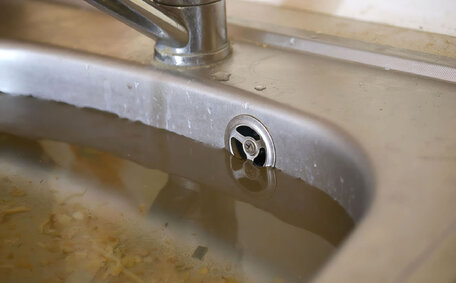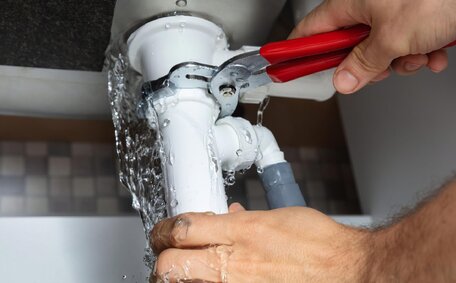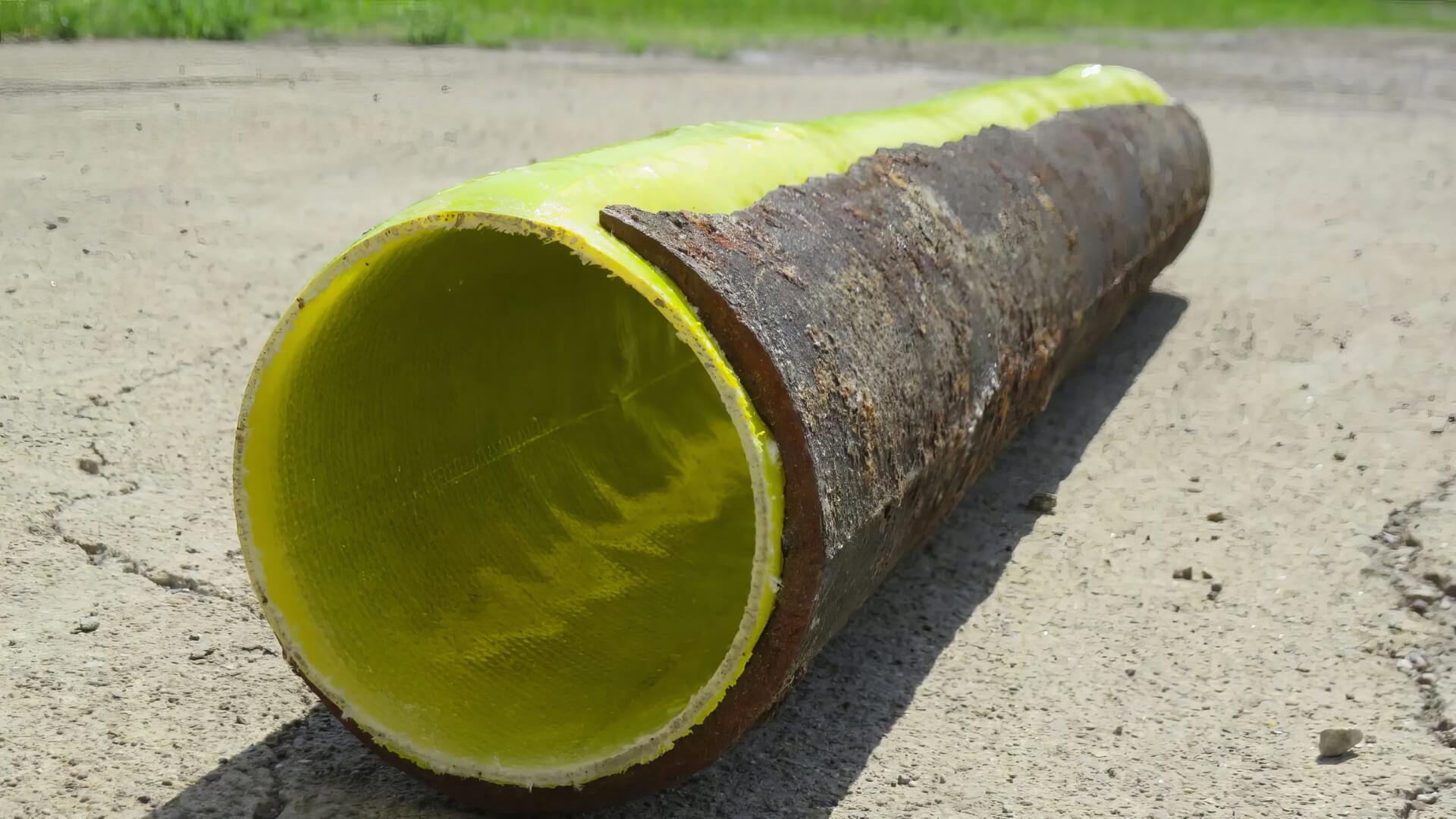Introduction to pipe relining
When old or damaged pipes underneath a property begin to fail, pipe relining offers a trenchless solution to restore functionality without major excavation. Pipe relining involves inserting a resin-saturated liner into the existing pipe, which is then cured to form a smooth, sealed pipe.
At Newtown Plumbing, we specialise in all your pipe relining needs across Sydney for residential and commercial sites.
This article will cover everything you need to know about pipe diameters suitable for relining. With over a decade of pipe relining experience, our team of experts can provide clarity on determining if your pipes are candidates for trenchless relining.
We’ll address common questions around how small a pipe can be for the relining process, whether pipe size is reduced after relining, typical scenarios where size limitations come into play, and considerations around cost-effectiveness.
Understanding pipe diameter requirements
When assessing whether pipe relining is suitable, one of the most important factors is the diameter of the existing pipework. There are physical limitations around the smallest pipes that can be relined based on the liner material and curing process used.
Most relining contractors, including here at Newtown Plumbing, use felt or polyester resin-impregnated liners that can accommodate pipes from 40mm up to 225mm in diameter. This aligns well with common pipe diameters used in residential settings around Newtown and wider Sydney, which typically range from 50mm to 150mm.
Pipes smaller than 40mm are generally not suitable for relining because the liner material, once cured, would overly restrict water flow. However, pipes up to 225mm like some larger stormwater drains may still be candidates for this trenchless solution.
In scenarios where very small pipe diameters under 40mm exist, such as with some tapware lines, a full replacement by our drainage specialists may be the most viable option. We can assess your unique situation and pipe diameters as part of our detailed site inspection and reporting process.
Typical minimum diameters for relining
When it comes to the typical minimum diameters suitable for pipe relining, most experienced providers follow the guideline of 40mm as the starting point. Here at Newtown Plumbing, we use premium grade epoxy resin liners that can reline pipes as small as 40mm up to 225mm.
The key benefit of epoxy resin is its durability, flexibility and ability to cure evenly which enables it to handle this diverse size range. Once installed, we guarantee epoxy resin liners to restore full pipe function for at least 15 years.
It’s also worth noting that as part of the curing process, epoxy resin liners shrink to take the shape of the host pipe. This results in an average diameter reduction of about 6mm after relining across all pipe sizes.
So for a 100mm clay pipe for example, the relined diameter would measure around 94mm internally after completion of works. Rest assured this slight size decrease has a negligible impact on water flow, yet still allows the structural integrity and waterproof seal of the existing pipe to be restored.
How diameter impacts flow rates
When it comes to pipe relining, a common question we get asked is how the slight diameter reduction after the process impacts water flow rates.
In plumbing, pipe diameter has a direct correlation with flow rates - the larger the diameter, the greater the potential water volume that can pass through per second. So when a 100mm pipe for example gets relined down to 94mm, you may intuitively expect flow rates to drop.
However in practise, we often see improved flow rates post-relining compared to the original pipes. This is because the epoxy resin liners create a smooth, frictionless surface inside the pipework. So despite the minor reduction in size, water can flow faster through the newly sealed pipes.
There are also diminishing returns when it comes to potential flow rates through oversized pipes. So moving from 100mm to 94mm makes a negligible difference, whereas relining a 40mm pipe down to 34mm could noticeably decrease the flow.
This is why our technicians take pipe diameters into account when inspecting and recommending solutions. In scenarios where flow rates are critical such as commercial sites, we can also suggest alternate trenchless methods better suited than standard relining.
Overall when delivered by experienced providers like Newtown Plumbing, pipe relining restores or even boosts flow rates in most residential and commercial settings across Sydney.
The relining process and diameter considerations
When our team undertakes a pipe relining job, diameter considerations are taken into account at every stage from initial inspection through to post-relining testing.
The process starts with a detailed site inspection and pipe measurement using CCTV cameras. As well as identifying damage and blockages, this allows accurate sizing of the existing pipe diameters. Sections with inadequate diameter below 40mm would be flagged as unsuitable for standard relining.
our technicians clean and prepare the pipes in readiness for the resin-saturated liner to be inserted. Care is taken negotiating bends, joins and any sections with diameter changes to ensure the liner sleeve passes through smoothly.
Interestingly, the liner material allows a single continuous sleeve to be inserted through multiple diameter variations in the pipe network. This enables entire runs between two access points to be relined in one seamless solution, even covering junctions and bends.
Whether the existing pipes are clay, plastic, galvanised steel or a mix, our epoxy resin liners can bond effectively to restore function. The curing process may result in a typical diameter reduction of around 6mm as previously outlined.
We thoroughly test the relined pipes with another CCTV inspection and hydrostatic test to check for leaks, smoothness of water flow and any remaining blockages. Provided post-relining diameter meets minimum standards for the property’s needs, the job is complete.
As Sydney’s trusted specialists in trenchless pipe solutions, contact Newtown Plumbing to learn more about pipe relining and whether it’s the most suitable approach for your pipe diameter situation.
Inspection and measurement
The starting point for any relining project is a detailed inspection and measurement process. At Newtown Plumbing, we use state-of-the-art CCTV pipe inspection cameras that are fed down the pipe network via existing cleanout points.
As well as gaining a clear visual of the pipe condition including damage, cracks, tree roots and other blockages, our cameras precisely measure the diameter of every pipe section. Advanced on-screen measuring tools display exact dimensions in real time down to the millimetre.
Inspection cameras also identify the pipe materials whether clay, plastic, copper, steel or cast iron. Together with diameter data, this builds a comprehensive profile of the pipework needing restoration across the entire network between access points.
Armed with accurate pipe dimension measurements, our technicians can determine if standard epoxy resin relining is suitable or if alternate trenchless methods may be better based on diameters. We can also calculate all your resin liner material requirements and predict the expected post-cure pipe size.
Contact Newtown Plumbing to learn more about pipe inspections and measurement processes - the critical first step for successful long-lasting pipe relining in Sydney homes and businesses.
Creating and installing the new pipe lining
Once the existing pipe dimensions and layout are clearly mapped, we create a custom-fitted epoxy resin liner to match. The process starts by impregnating a felt tube with liquid epoxy resin, creating a flexible yet strong liner material.
Our technicians thoroughly clean and prepare the original pipework in readiness to receive this resin-saturated liner. Carefully negotiated through any tight bends or junctions, the liner is pulled into position spanning the entire section needing restoration.
Utilising steam, hot water or UV light, we then activate the specially formulated curing process. As the epoxy resin sets solid, it bonds with the pipe walls forming a smooth, seamless lining. This restores structural stability and water flow within ageing pipes without digging or pipe replacement.
The curing method enables flexibility in on-site timeframes - from rapid few hour installations to longer overnight cures for larger scale commercial relining. Once fully set, the precision-fitted epoxy liner effectively becomes the renewed pipes with an expected lifespan over 15 years.
Testing the relined pipe section
Once the relining process is complete, our team undertakes rigorous testing to validate the integrity of the restored pipe section. This involves a multi-point inspection and hydrostatic pressure testing protocol in line with strict industry standards.
We thoroughly re-inspect the relined pipe using CCTV cameras to check for a smooth, seamless lining with no remaining cracks or leaks. Flow rates are confirmed through most pipe sections with dyed water, ensuring they meet acceptable guidelines.
In addition, we carry out positive air pressure tests followed by sustained hydrostatic testing using water pressurised up to 1500 kPa. The relined section must maintain this pressure without leakage or failure to pass testing.
Both CCTV and hydrostatic testing provides certainty that the relining has been successful. The pipes are now completely sealed, able to safely handle the typical rigours of household water pressure and flows for at least 15 guaranteed years of life.
As seasoned experts in trenchless pipe solutions, the team at Newtown Plumbing follow established test procedures to validate relining quality for every residential or commercial job.
Potential limitations of relining small diameters
When it comes to relining pipes on the smaller side of the acceptable diameter range, there are some limitations to note. At the 40mm starting point, the precision of liner measurement and installation becomes critical.
If diameters are calculated incorrectly or the resin-impregnated sleeve does not sit perfectly after curing, the final internal opening can be overly reduced. This could negatively impact water flow rates beyond the typical 6mm reduction seen after standard relining jobs.
There are also some residential scenarios with small diameter piping where flow rates are already suboptimal if the original plumbing does not follow current best practises. Further decreasing the inside diameter through relining could exacerbate low flow issues.
Our experienced technicians carefully assess these factors during initial CCTV pipe inspections. We can best advise if small diameter relining is suitable, or if a full pipe replacement may be the better solution to permanently resolve flow rate problems.
In summary, while diameters down to 40mm can be relined, precautions must be taken by specialists like Newtown Plumbing to ensure the finished liner does not overly impede water flow - especially in pipes where flow rates are already marginal.
When to consider replacement over relining
In certain situations, full pipe replacement may be the better solution compared to relining. If multiple pipe sections have diameters below 40mm or are overly corroded, replacement allows optimal sized new pipes to be installed. For tricky pipe locations winding through concrete or inaccessible areas, the excavation effort of replacement can make access simpler.
We would also recommend replacement for pipes with persistent tree root infiltrations that cannot be fully cut out or treated, as tiny cracks always remain post-relining allowing future root regrowth.
Additionally, some pipe materials like older rusting galvanised steel or asbestos cement pipes are at the point where replacement is safer and allows modern PVC pipes to be utilised.
The team at Newtown Plumbing have the expertise to advise whether your unique situation warrants full pipe replacement over relining based on pipe size, position, access and material factors.
We aim to always provide all your most cost and time-effective solutions while keeping water flow and safety as top priorities for your residential or commercial property.
Cost analysis: Relining vs. replacement
When weighing up the costs of trenchless pipe relining compared to full drainage replacement, relining is the clear value option in the majority of situations.
Full pipe replacement often costs anywhere from $250 to $500 per linear metre to excavate, remove old pipes and install new drainage. Multiplied across an average Sydney property, this equates to $15,000 to $30,000+ for replacement.
In contrast, industry averages for pipe relining range from $130 to $250 per linear metre - representing huge potential savings. We strive to keep our prices as competitive as possible, with quotes tailored to each unique property’s piping layout.
There are also added expenses relating to landscaping, surface repairs, approvals and indoor flooding risk to consider with full drainage replacement. Pipe relining avoids all of these, providing a neater, less invasive and more affordable pipe restoration solution.
At Newtown Plumbing, we are committed to providing Sydney homeowners and businesses cost-effective pipe repair services. Our detailed CCTV inspections and reporting process aims to always advise the most appropriate fix or relining for your situation at the best possible price.






